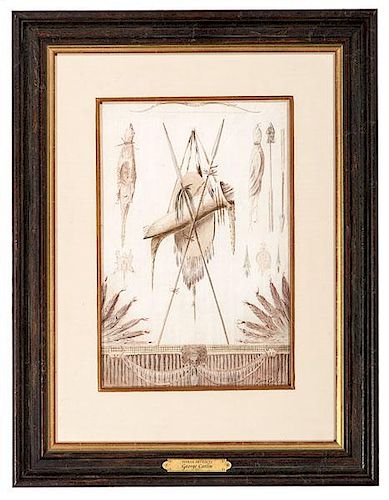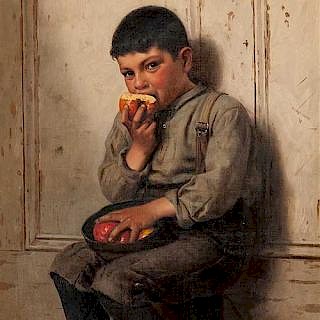George Catlin (American, 1796-1872)
About Seller
6270 Este Ave.
Cincinnati , OH 45232
United States
With offices in Cincinnati, Cleveland and Denver, Cowan’s holds over 40 auctions each year, with annual sales exceeding $16M. We reach buyers around the globe, and take pride in our reputation for integrity, customer service and great results. A full-service house, Cowan’s Auctions specializes in Am...Read more
Two ways to bid:
- Leave a max absentee bid and the platform will bid on your behalf up to your maximum bid during the live auction.
- Bid live during the auction and your bids will be submitted real-time to the auctioneer.
Bid Increments
| Price | Bid Increment |
|---|---|
| $0 | $25 |
| $500 | $50 |
| $1,000 | $100 |
| $2,000 | $250 |
| $5,000 | $500 |
| $10,000 | $1,000 |
| $20,000 | $2,500 |
| $50,000 | $5,000 |
| $100,000 | $10,000 |
About Auction
Oct 17, 2015 - Oct 18, 2015
Cowan's Auctions dawnie@cowans.com
- Lot Description
George Catlin (American, 1796-1872)
Indian Artifacts
original watercolor on paper
signed l.r.
framed
16.25 x 11 in. (sight)
Kennedy Galleries, NY, label on verso
Further inscription in pencil on verso: From the renoun [sic] Collection Duke of Portland (Wm. John Cavendish Bentinck-Scott) / Said to be a display at London Egyptian Hall in 1840 / purchased from Sir Thomas Philipps
The subject of this watercolor epitomizes Catlin's fascination with cultural artifacts from American Indian tribes. The objects depicted here include an Eastern style otter bag on the left hand side, a Plains style quiver with arrows in the center, a recurve bow at the top, spears on the right hand side, and eagle feathers in each bottom corner. It should be noted that the spears are virtually identical to those pictured in Catlin's 1832 work, He-Who-Jumps-Over-Everyone, a subject which was widely distributed in print form.
In 1840, Catlin opened his own gallery in the London Egyptian Hall, in order to expose a European audience to the tribal cultures of America. Most likely, this watercolor was exhibited, along with other artworks, in his "Indian Gallery", as he called it. According to the Museum of the American West, Catlin's gallery was originally successful, but in order to rekindle interest in his work in subsequent years, he also included displays of genuine artifacts and live performances of Indian rituals and dances.
The Egyptian Hall was located in Piccadilly, London, from 1812 until its demolition in 1905. Built in the Egyptian style, it was conceived as an exhibition hall commissioned by English traveler and collector William Bullock to display his extensive ethnographic and natural history collection, and designed by English architect Peter Frederick Robinson. In 1820, however, the Egyptian Hall was turned into a fine art exhibition space and became eventually known for promoting the watercolor medium.
Two purported notable owners of this particular watercolor by Catlin were William Cavendish-Bentinck, 6th Duke of Portland (1857-1943) and Sir Thomas Phillipps. The Duke of Portland was an important political figure of the Victorian era, sitting as a Conservative in the House of Lords and also holding office as Master of the Horse. In addition, he was a renowned thoroughbred owner. Sir Thomas Phillipps (1792-1872) was an English antiquarian known for his outstanding collection of books. - Shipping Info
-
SHIPPING. At the request of the buyer, Cowan's will authorize the shipment of purchased items. Shipments usually occur within two weeks after payment has been received. Shipment is generally made via UPS Ground service. Unless buyer gives special instructions, the shipping method shall be at the sole discretion of Cowan's Auctions, Inc.. Cowan's is in no way responsible for the acts or omissions of independent handlers, packers or shippers of purchased items or for any loss, damage or delay from the packing or shipping of any property.
-
- Buyer's Premium



 EUR
EUR CAD
CAD AUD
AUD GBP
GBP MXN
MXN HKD
HKD CNY
CNY MYR
MYR SEK
SEK SGD
SGD CHF
CHF THB
THB












